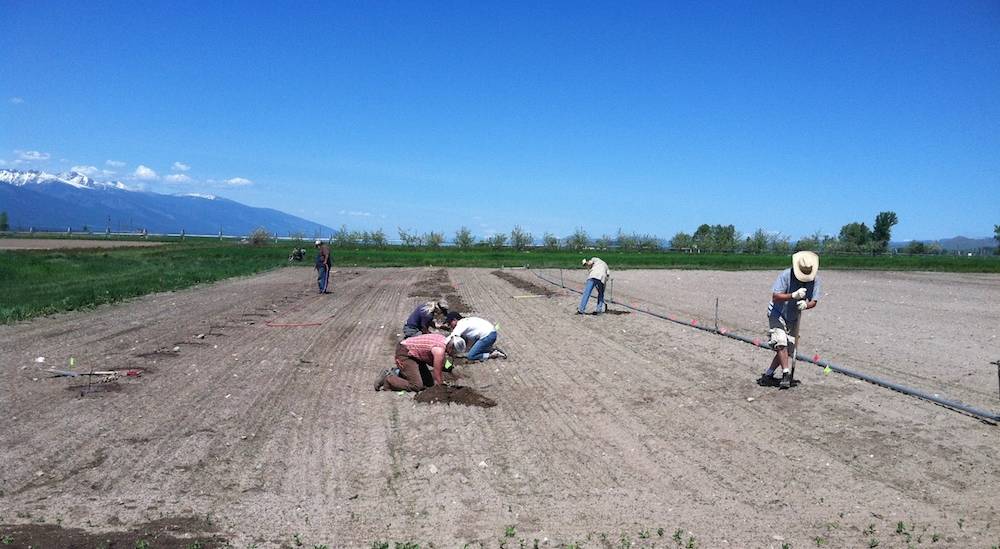Planning Your Rows
Designing the new research vineyard at WARC in 2014. The irrigation pipe on the right is being used as a guide for defining rows.
There are two major considerations when planning rows in a vineyard:
Spacing
Carefully measure and mark rows before breaking ground for trellising or planting. Consider the following factors when determining spacing between rows and plants:
Trellising system
- Single curtain systems—llike VSP or High Cordon—ltypically need at least 10 ft of spacing between rows;
- Double curtain systems—like Geneva Double Curtain—lwill require more space within the row due to the double wires, so plan for at least 12 ft between trellises.
Cultivar types and their general vigor
-
Cultivars with more vigorous growth will need more space between vines (~8 ft), whereas less vigorous cultivars—or even cultivars planted in less fertile soil—can be planted less than 8 ft apart (6-8 ft is typical). Regardless, be sure to consult information specific to your chosen cultivars (PDF) before determining plant spacing.
Vineyard management equipment
- Measure vineyard management equipment like tractors, mowers, or other large equipment to ensure they will comfortably fit between the rows. If the vineyard is on a slope, allow a foot or two of buffer between rows to account for any drifting of your equipment. If you plan to use overhead netting for protection from birds, space rows to be compatible with netting widths and incorporate taller posts into the trellis design to help keep the net away from vines.
Orientation
Ideally, vineyard rows should be oriented N-S, which allows for maximum sunlight exposure. This isn’t always possible, as other factors must be considered, including the design and cost of trellising (e.g. fewer longer rows are more economical than many shorter rows) and the slope and terrain of the site. On irregular terrain, growers should orient rows to follow the contour of the land, which will improve safety when using equipment and minimize erosion on slopes.
You can find more detailed information on best practices for planning your rows in the section “Starting Your Vineyard” in UMN’s Growing Grapes in Minnesota guide (PDF).


